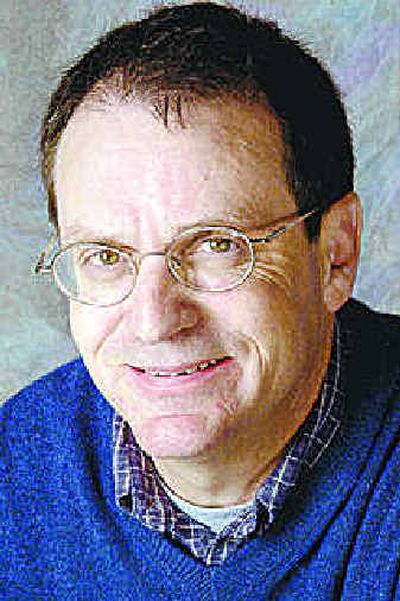No moose, but thanks for trying

I want to thank moose-loving people all over the Inland Northwest for their kindness and support.
Not that it’s done much good so far, but we’ll address that later.
First let me bring you up to date on the moose issue. I wrote a column two weeks ago detailing our personal year-and-a-half long moose drought. This is the longest time in our adult lives that my wife Carol and I have gone without running across a big awkward ungulate in the woods. No matter how hard we looked, we just couldn’t spot a moose. This was beginning to chafe.
Frankly, I wasn’t positive that anyone would share our moose obsession, or, for that matter, care. But never underestimate the lure of the moose. Judging from the response I received, lots of people just love those meeses to pieces.
My e-mail box was filled beyond its capacity with moose stories, moose advice and moose snapshots. And I do mean beyond its capacity. Interspersed between the moose letters were increasingly hysterical messages from the “system administrator” informing me that I had “exceeded my mailbox limits” until finally, my mailbox performed the electronic version of explode. (I solved the problem by deleting all of those messages from the system administrator).
My voice-mailbox was even worse, having erupted in a ball of flame the day after the column appeared.
One of the typical responses that survived, unfortunately, went like this: “We have made many trips to Yellowstone and have found that the best place to see moose is at Fishing Bridge. … They are almost always seen on either side of the turn-off road, right before you cross the bridge. … The best time to see them has been before sundown.”
The writer, one J. Hill, is absolutely right about this. We, too, have seen moose at this spot. When I call this message “unfortunate,” I mean only this: At the exact moment J. Hill was sending this message, Carol and I were in Yellowstone. At Fishing Bridge. At sundown. The place was 100 percent moose-free.
So you can see why we are beginning to take this personally. We got back this week from an eight-day trek through the Beartooth Mountains, the Sunlight Basin in Wyoming and Yellowstone National Park. And after all that, the moose drought continues.
We saw bison by the hundred. We saw elk by the dozen. We even saw five bears, which is about five over our usual quota.
I can’t even remember how many times we came around a bend to see a huge, brown, antlered specimen standing right in the middle of the Yellowstone or Gibbon or Madison rivers.
“Carol!” I would say excitedly, “I think it’s …”
“Another darn elk,” she would say, lowering her binoculars in defeat.
We were trying not to seek the moose too overtly, having decided before the trip that moose show up mainly when you’re not looking for them. However, on our last day in Yellowstone, I began to panic. Carol was beginning to mutter darkly about an “anti-moose conspiracy.” I did not want to make the long drive home without giving it one all-out push.
So I found a hike through what my guidebook described as prime moose habitat. We rose early, drove to the trailhead and checked out the trail register. The previous day’s entries filled me with moose joy.
“Saw mama moose and calf,” said one entry. “Big bull moose in lake,” said another.
Hope soaring, we marched through mile after mile of marshland, scrub willow and alpine lake country.
Nothing with big broad antlers. Nothing with that comical sloped nose. Nothing with that lovable ungainly gait. All we saw were about 20 more big, dumb buffalo.
Yet our spirits were buoyed when we came home to all of the excellent suggestions from readers
Some of these suggestions were slightly impractical, such as the one that advised us to head for Soldotna on the Kenai Peninsula of Alaska. Well, yes, I think we would be more or less guaranteed to see about 400 moose there, but we are not yet desperate enough to spend a thousand or two bucks on the airline ticket. (Are we, dear?)
Others were closer to home, yet impractical in the timing, as in the guy who called to say he was sitting on his desk at a local lake, watching a mama moose and baby, and that I should head over right away. Unfortunately, we got this message six days too late. We were at Fishing Bridge at the time, failing to see a moose.
However, many others called with highly practical suggestions for seeing moose near Sandpoint, near Hauser Lake, near Newman Lake, near the Palouse River, near the Hiawatha Trail in the Bitterroots and even at Greenwood Cemetery, right in Spokane. (One of the ironies of the moose drought is that we live in a city where wayward moose sometimes wander down the residential streets).
So Carol and I now have some excellent moose leads to follow up. One correspondent, Wes Hedrick, gave us detailed directions to some prime moose habitat near Hidden Lakes Golf Course near Sandpoint. I won’t tell you exactly where – I don’t know if Wes wants me giving away all his moose secrets – but Carol and I plan a dawn or dusk trip there sometime soon.
Meanwhile, we’ll just have to settle for going to Moose Lake, a downtown store, and buying a pair of moose salt-and-pepper shakers for our friends Shirley and Wally. Those shakers should be perfect for their Wyoming cabin, an idyllic spot where moose cavort every day.
Did I mention we stayed at their place for two nights last week? Strangest thing. The moose went AWOL.